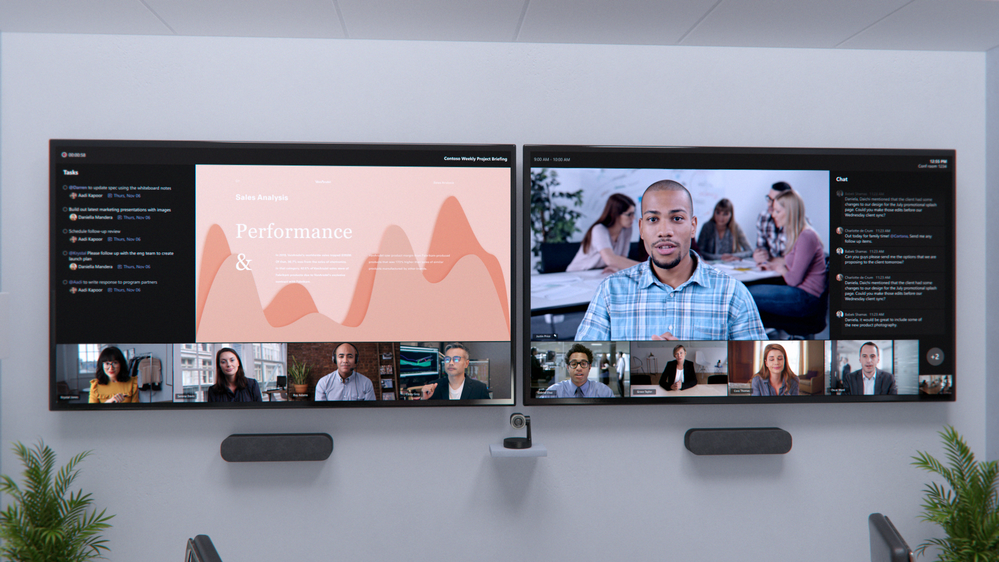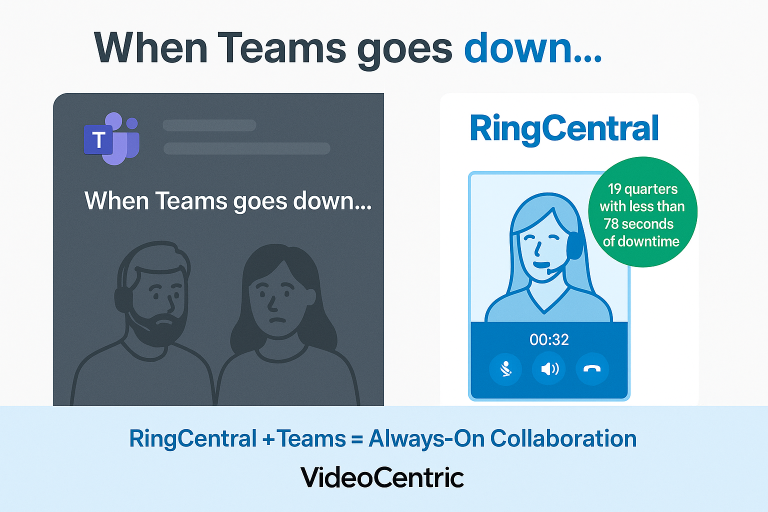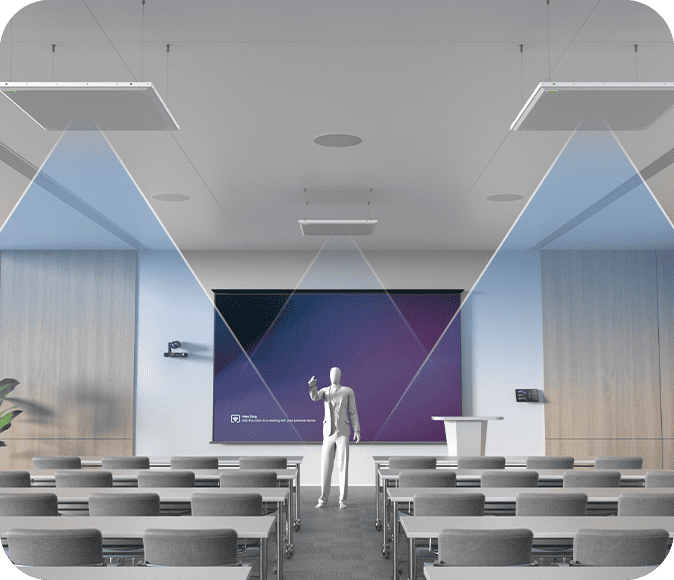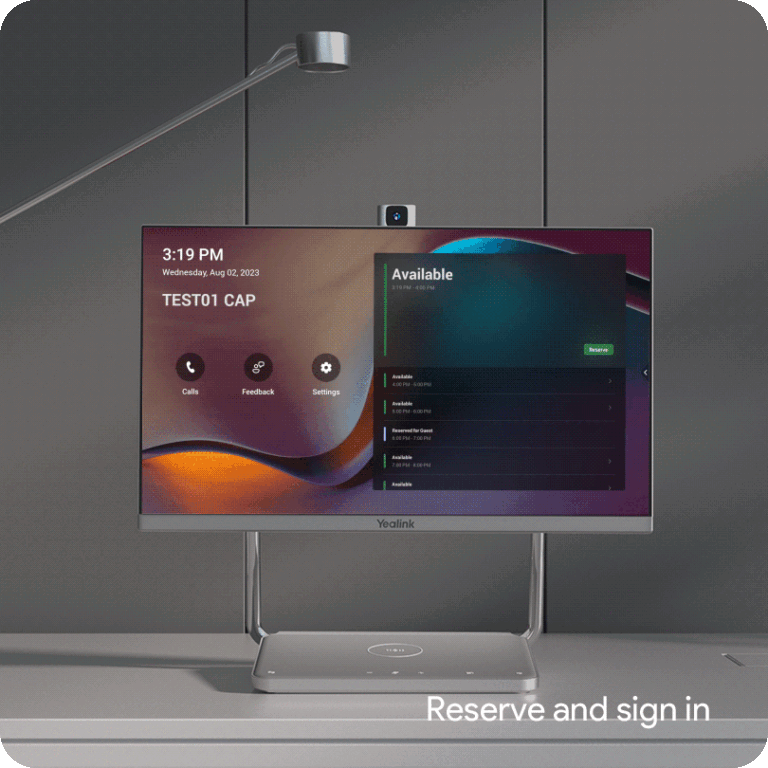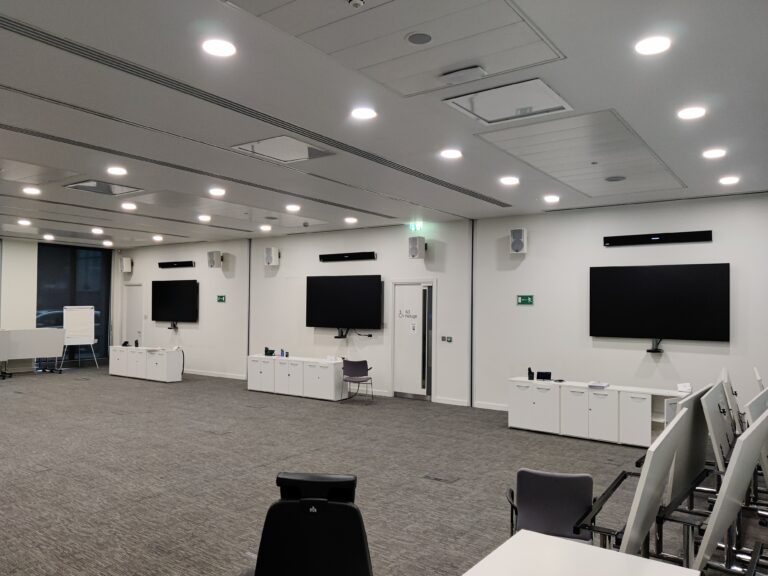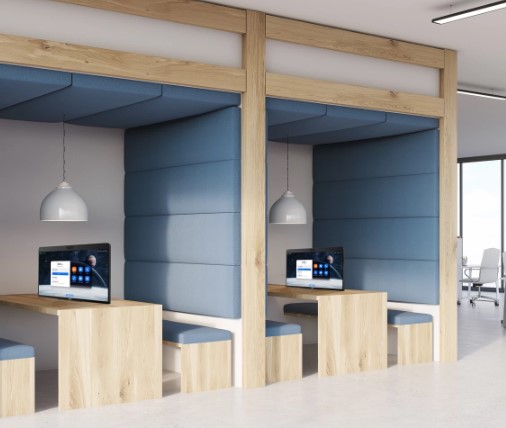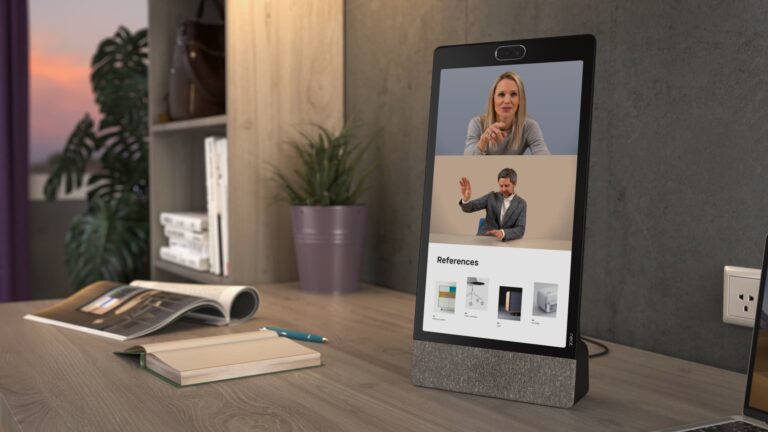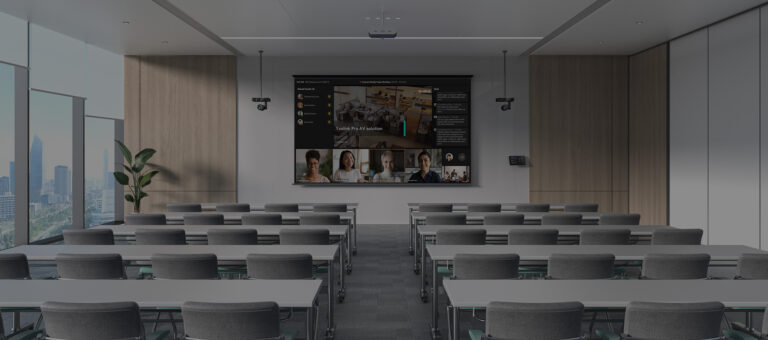At the beginning of August Microsoft released 4 new features to their Teams Room Systems!!
Here is a full breakdown of the new releases and all you need to know about how this will work with your Teams Room System.
According to Greg Baribault, Head of Product for Teams Rooms at Microsoft. “It is our biggest release of the year, including four features that I think you’ll really love.”
Cloud IntelliFrame makes participants in a meeting room appear similar to remote attendees where the camera used is non-AI, helping pick up on facial expressions and other non-verbal cues as if they were there in person. Cloud IntelliFrame addresses the limitations of traditional non-AI cameras in remote meetings by enhancing communication, collaboration, empathy, and inclusivity. By providing a more immersive and lifelike experience, this technology has the potential to transform how remote work is conducted and redefine the way teams interact in virtual settings. This would be a useful update to the Teams Room Systems for many reasons:
- Enhanced Communication: Non-verbal cues such as facial expressions, body language, and gestures play a crucial role in effective communication. By making participants in a meeting room appear similar to remote attendees, Cloud IntelliFrame can help bridge the gap between in-person and remote interactions, enabling a more natural and nuanced communication experience.
- Improved Collaboration: Remote participants often feel disconnected from the discussions and decisions made during in-person meetings. With Cloud IntelliFrame, remote attendees can better engage with the meeting by observing the visual cues of in-room participants. This can lead to more active participation and improved collaboration among all meeting participants.
- Reduced Misunderstandings: Misinterpretation of intent and emotions is common in virtual meetings due to the lack of non-verbal cues. By enabling remote participants to perceive facial expressions and gestures more accurately, Cloud IntelliFrame can help reduce misunderstandings and enhance the overall quality of communication.
- Inclusive Meetings: Inclusion is a key consideration in today’s remote work landscape. Cloud IntelliFrame can help create a more inclusive meeting environment by ensuring that remote attendees can participate in discussions as if they were physically present. This can lead to a stronger sense of involvement and engagement for all participants.
- Empathy and Engagement: Seeing the reactions and expressions of colleagues in real-time can foster a greater sense of empathy and emotional connection among team members, irrespective of their physical location. This can lead to stronger relationships, improved team dynamics, and a more positive work environment.
- Effective Decision-Making: When remote participants can accurately gauge the reactions and opinions of those in the meeting room, decision-making processes can be more effective. This is particularly important for discussions that require a consensus or quick reactions.
- Training and Presentations: Cloud IntelliFrame could also be valuable for training sessions and presentations. Presenters can receive immediate feedback from both in-room and remote participants, allowing them to adjust their delivery and content based on real-time cues.
- Technology Adaptation: Many organizations may already have non-AI cameras in their meeting rooms. Cloud IntelliFrame could extend the usefulness of existing hardware without requiring significant upgrades.
- Hybrid Work Environments: As the trend towards hybrid work environments (combining in-person and remote work) continues, technologies like Cloud IntelliFrame can help create a more cohesive experience for all employees, regardless of their work location.
- Competitive Advantage: Organizations that embrace innovative technologies to improve remote collaboration can gain a competitive advantage by attracting top talent, improving productivity, and fostering a positive corporate culture.
IntelliFrame, for intelligent cameras, enables multi-stream video, face recognition of in-room participants, active speaker recognition, attributed voice-based transcription and panoramic 180° views from front-of-room cameras and 360° views from centre-of-room cameras. IntelliFrame, offers a range of advanced features for intelligent cameras. Let’s break down the usefulness of each of these features:
- Multi-stream video: This feature allows the camera to capture and transmit multiple video streams simultaneously. This is extremely useful in scenarios where there are multiple focal points or areas of interest within a room. For example, in a conference room, you might want to capture the presenter, the audience’s reactions, and a wide shot of the entire room, all at the same time. Multi-stream video enhances the overall viewing experience and provides more context.
- Face recognition of in-room participants: Face recognition can automate the process of identifying and labelling individuals in the room. This is valuable for applications like attendance tracking, personalized user experiences, and security. In a business setting, the system can help identify who’s present in a meeting and display their names or relevant information on the screen.
- Active speaker recognition: This feature identifies the current speaker in a room. It’s particularly useful in scenarios like video conferencing, where the camera can automatically switch focus to the person speaking. This creates a more natural and engaging viewing experience for remote participants.
- Attributed voice-based transcription: Automatic transcription of spoken content is beneficial for creating meeting notes, generating captions for accessibility, and improving searchability of recorded content. When combined with face recognition, you can attribute the transcribed text to specific participants, making it easier to follow discussions.
- Panoramic 180° and 360° views: These wide-angle views are especially useful in larger meeting spaces or auditoriums. They allow the camera to capture the entire room or stage, providing a more immersive experience for remote viewers. These views are also great for recording events, presentations, and performances, where capturing the ambiance and full scope of the space is crucial.
IntelliFrame update brings a suite of features that significantly enhance the capabilities of intelligent cameras. It enables more efficient and engaging communication, improved collaboration, better accessibility, and streamlined content creation. Whether in business settings, education, events, or other contexts, these features collectively contribute to a more versatile and valuable camera system.
Front-Row unified backgrounds and video segmentation removes individual backgrounds, adjusts a video participant’s size and applies a uniform background to make it appear that remote participants are in the same room. This is intended to reduce distractions and make it easier for people in the room to feel connected to remote meeting participants. This feature is turned ON by default but can be disabled via XML.
Front-Row unified backgrounds and video segmentation has several potential benefits that could make it a useful addition to remote meetings and video conferencing platforms:
- Reduced Distractions: One of the primary challenges of remote meetings is the potential for distractions caused by varying backgrounds and environments of participants. By removing individual backgrounds and replacing them with a uniform background, the focus remains on the participants and the content of the meeting, reducing visual clutter and potential distractions.
- Professionalism and Consistency: Unified backgrounds contribute to a more professional appearance during video conferences. Participants may not always have a tidy or appropriate background, especially in home environments. The uniform background provides a consistent, polished look, helping participants maintain a higher level of professionalism.
- Enhanced Engagement: When all remote participants appear to be in the same virtual room due to background segmentation, it can create a stronger sense of connection and engagement. This setup simulates an in-person meeting atmosphere and may lead to better communication and collaboration among participants.
- Visual Clarity: The feature that adjusts a participant’s size can help ensure that everyone on the call is clearly visible, regardless of their physical distance from the camera. This can be particularly helpful when participants are using a variety of devices and camera setups.
- Inclusivity and Accessibility: Not all participants may have the ideal physical space or background for video calls. This feature promotes inclusivity by ensuring that everyone’s video presence is equally clear and visually appealing, regardless of their individual circumstances.
- Branding and Customization: For businesses and organizations, the ability to set a unified background can reinforce branding and provide a professional touch to virtual meetings. It’s possible to use branded or themed backgrounds that align with the company’s identity.
- Emotional Connection: Seeing remote participants in a shared virtual space can evoke a sense of togetherness and belonging. This emotional connection can lead to better relationships among team members, even when they are physically distant.
- User-Friendly Experience: The feature simplifies the process for participants by automatically applying the background adjustments. This ease of use can encourage more people to engage in video conferencing, even those who might be less comfortable with technology.
- Focus on Content: By eliminating the need to worry about background choices, participants can focus more on the content being discussed during the meeting, which can lead to more productive discussions and outcomes.
- Minimized Technical Challenges: Inconsistent lighting, messy backgrounds, and other technical challenges can hamper the quality of video calls. By applying background segmentation and size adjustments, these technical issues are mitigated, leading to smoother and more effective communication.
Overall, the update aims to create a more immersive, distraction-free, and connected environment during remote meetings, improving the overall quality of the virtual communication experience.
Spatial audio in Front Row experience makes it possible to use stereo speakers to make listening to remote attendees a more natural experience. Audio is played closer to the physical location of remote participants on a Front Row screen layout, to make it feel like the remote people are in the room and reduce meeting fatigue. This feature is turned OFF by default but can be enabled via XML.
The addition of spatial audio in a Front Row experience could offer several valuable benefits for remote communication and collaboration scenarios:
- Enhanced Realism and Immersion: Spatial audio creates a more immersive and natural environment by simulating the way sound behaves in a physical space. This can make remote attendees feel as if they are actually present in the room, contributing to a more engaging and realistic meeting experience.
- Improved Communication Clarity: Traditional audio setups often struggle to convey the direction and location of speakers, which can lead to confusion and decreased comprehension. Spatial audio enables better differentiation between speakers by placing their voices in specific positions within the virtual space, making it easier to follow conversations.
- Reduced Meeting Fatigue: One major drawback of remote meetings is the increased sense of fatigue that participants often experience due to the constant focus required to discern and process voices from different sources. Spatial audio’s ability to mimic real-life sound dynamics may reduce cognitive load and subsequently alleviate meeting fatigue.
- Better Social Dynamics: Human communication heavily relies on non-verbal cues and the spatial orientation of voices. Spatial audio can replicate the sense of proximity and directionality present in face-to-face interactions, making it easier for participants to perceive social cues and engage in more natural conversations.
- Interactive Presentations and Performances: Beyond meetings, spatial audio could enhance the experience of presentations, lectures, and performances by allowing presenters to virtually position themselves within the auditory space. This could lead to a more dynamic and captivating delivery for remote audiences.
- Cross-Platform Compatibility: As spatial audio gains traction, it’s likely to become more standardized across various communication platforms and devices. This would enable a consistent experience for users regardless of the technology they are using.
- Inclusive Collaboration: For teams distributed across different locations, spatial audio could help bridge the gap between remote and in-person participants, making everyone feel equally present and engaged.
- Enhanced Remote Presence: Remote attendees might feel isolated or detached from in-person meetings. Spatial audio can help bridge this gap by giving them a stronger sense of being physically present, fostering a sense of belonging and participation.
- Increased Engagement and Participation: A more immersive and interactive audio experience could encourage remote attendees to be more active participants, as they feel more connected to the discussions and events.
- Innovation in Remote Collaboration: The integration of spatial audio showcases technological advancements and innovation in the realm of remote collaboration, setting a precedent for future developments in communication tools.
In summary, spatial audio in a Front Row experience has the potential to revolutionise remote communication by providing a more natural, immersive, and engaging way for remote attendees to interact. This could lead to improved collaboration, reduced fatigue, and more effective communication in virtual environments.
For more information you can read the Full Release Notes from Microsoft

